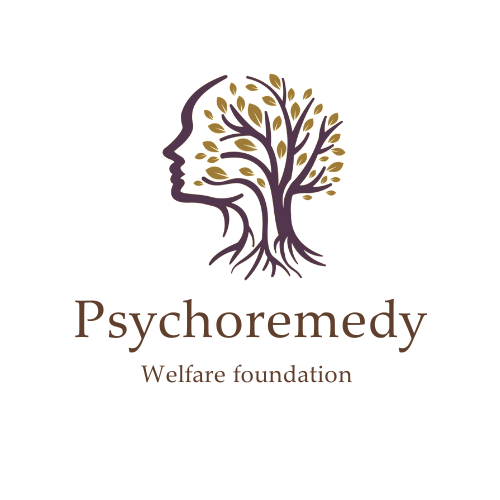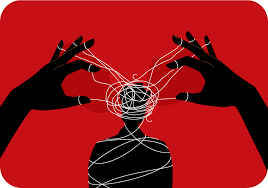Understanding Childhood Trauma: Core Causes, Lasting Impacts, and the Path to Healing
Author: Farhat Abbas Psychoremedy Team
Published: July 2025
Category: Psychological Health & Recovery
Introduction
Childhood is often seen as a time of innocence, exploration, and emotional growth. However, for many individuals, these early years are overshadowed by traumatic experiences that leave a lasting imprint on the mind and body. Childhood trauma is not merely a painful memory; it is a complex psychological event that can shape personality, relationships, and even physical health well into adulthood.
Understanding the roots and repercussions of childhood trauma is crucial for both mental health professionals and anyone working to overcome their past. In this article, we explore the core possibilities and causes of childhood trauma, its neuroscientific and psychological impacts, and the healing interventions backed by evidence-based research.
What Is Childhood Trauma
Childhood trauma refers to deeply distressing or disturbing experiences that occur during the developmental years (0-18 years old). These experiences overwhelm a child’s ability to cope, leading to long-term emotional, psychological, and physiological consequences.
Types of Childhood Trauma:
Acute Trauma: A single traumatic incident (e.g., a car accident or natural disaster).
Chronic Trauma: Repeated and prolonged events (e.g., ongoing abuse, neglect, or domestic violence).
Complex Trauma : Exposure to multiple and varied traumatic events, often of an interpersonal nature.
Core Possibilities: Causes of Childhood Trauma
The root causes of trauma vary widely, but most fall under these major categories:
- Physical, Sexual, or Emotional Abuse
- Neglect (Physical or Emotional)
- Witnessing Domestic Violence
- Parental Substance Abuse or Mental Illness
- Loss of a Parent (divorce, death, incarceration)
- Bullying and Peer Rejection
- Medical Trauma (e.g., surgeries, hospitalizations)
- Exposure to War or Community Violence How Trauma Affects the Brain and Body
Thanks to modern neuroscience, we now understand that trauma isn’t just psychological—it also rewires the brain.
Amygdala becomes hyperactive, increasing fear responses.
Hippocampus (responsible for memory) becomes impaired, leading to memory fragmentation.
Prefrontal Cortex (responsible for decision-making and emotional regulation) becomes underdeveloped.
Cortisol dysregulation affects stress hormones, impacting physical health.
This neurobiological impact can lead to lifelong difficulties with emotional regulation, anxiety, depression, attachment disorders, trust, and cognitive function.
Signs and Symptoms in Adulthood
Many adults who experienced childhood trauma may not immediately link their current struggles to past experiences. Common signs include:
Chronic anxiety or panic attacks
Emotional numbness or detachment
Low self-worth and self-sabotaging behavior
Fear of abandonment or difficulty maintaining relationships
Substance abuse or other forms of escapism
Difficulty concentrating or holding jobs
Frequent nightmares or sleep disturbances
Scientific Evidence: The ACEs Study
The Adverse Childhood Experiences (ACEs) study, conducted by the CDC and Kaiser Permanente, is a landmark in trauma research. It found that the higher the ACE score, the greater the risk for issues such as heart disease, depression, substance abuse, and even early death.
Key takeaway Childhood trauma is one of the most significant public health challenges globally.
Healing Childhood Trauma: Pathways to Recovery
Recovery is absolutely possible—with time, guidance, and the right interventions.
Evidence-Based Approaches:
- Trauma-Informed Therapy
EMDR (Eye Movement Desensitization and Reprocessing)
CBT (Cognitive Behavioral Therapy) for trauma
Internal Family Systems (IFS)
Somatic Experiencing Therapy
- Mind-Body Approaches
Yoga and breathwork
Mindfulness-Based Stress Reduction (MBSR)
Trauma-sensitive meditation
- Group Support and Psychoeducation
Support groups can help individuals feel less alone.
Educating the client about trauma can reduce shame and self-blame. - Lifestyle Interventions
Sleep hygiene, balanced nutrition, and physical activity
Reducing exposure to re-traumatizing environments
- Attachment-Based Parenting and Reparenting Work
Helps individuals rebuild internal safety and security.
Teaches emotional regulation and healthy self-love.
Final Thoughts: From Survival to Transformation
While trauma can shape a person’s life, it does not have to define it. With compassionate support, trauma-informed care, and inner courage, survivors can move from a place of survival to healing and transformation.
At Psychoremedy, we are committed to offering scientifically grounded, empathetic, and culturally sensitive mental health services. We believe in the power of healing through connection, understanding, and evidence-based practice.


